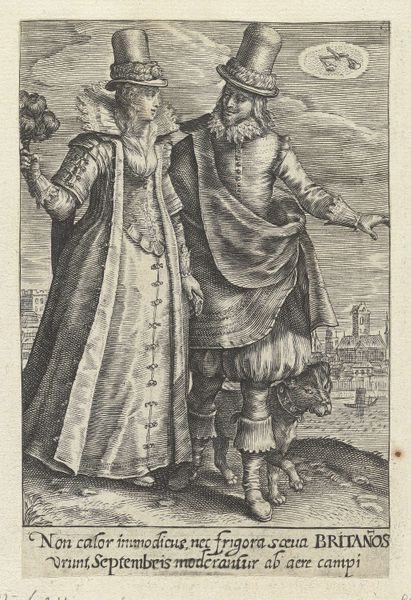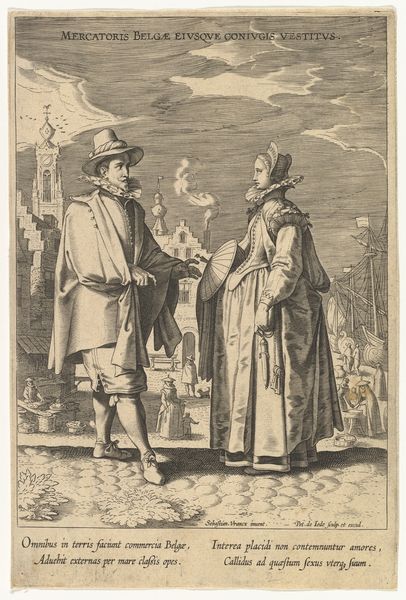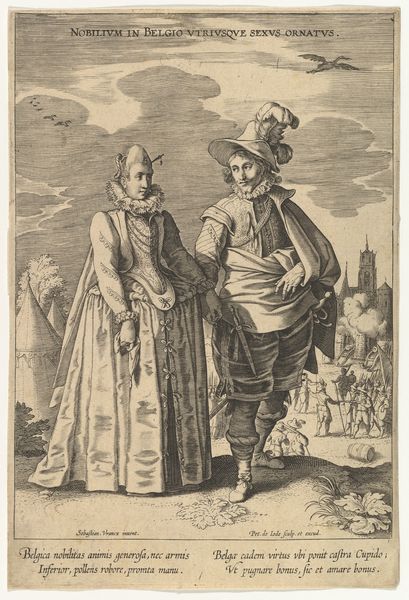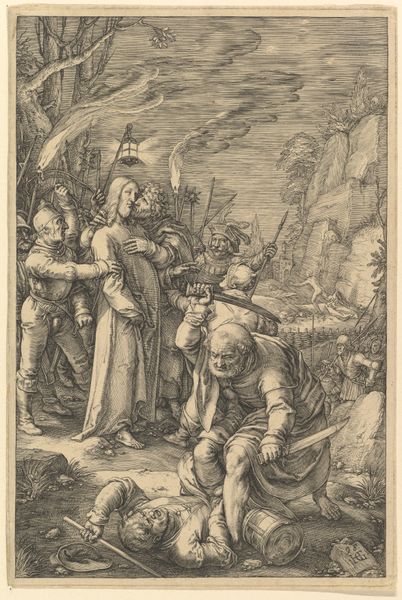
Hispani et Hispanae in Vestitu Cultus, from Fashions of Different Nations 1580 - 1634
0:00
0:00
drawing, print, engraving
#
portrait
#
drawing
# print
#
mannerism
#
figuration
#
history-painting
#
engraving
Dimensions: sheet: 9 3/16 x 5 7/8 in. (23.4 x 15 cm)
Copyright: Public Domain
Pieter de Jode’s engraving, "Hispani et Hispanae in Vestitu Cultus," presents Spanish fashion, capturing more than mere attire. The woman’s veil, cascading down her body, speaks volumes. Historically, veils symbolized modesty and piety, yet their use varied across cultures. In ancient Rome, the "flammeum," a bright orange veil, cloaked brides, symbolizing a new life. But here, in 16th-century Spain, the veil hints at something more, a shroud of mystery. This motif resonates through art history. Consider the veiled figures of antiquity, like veiled Vestal Virgins, or even Salome, who dances veiled before Herod, promising danger and seduction. Across time, the veil’s meaning shifts, yet it retains a powerful psychological resonance, hinting at hidden depths, concealed desires, and the complex interplay between concealment and revelation. The power of an image lies not just in what is seen but in the echoes it stirs within us.
Comments
No comments
Be the first to comment and join the conversation on the ultimate creative platform.













